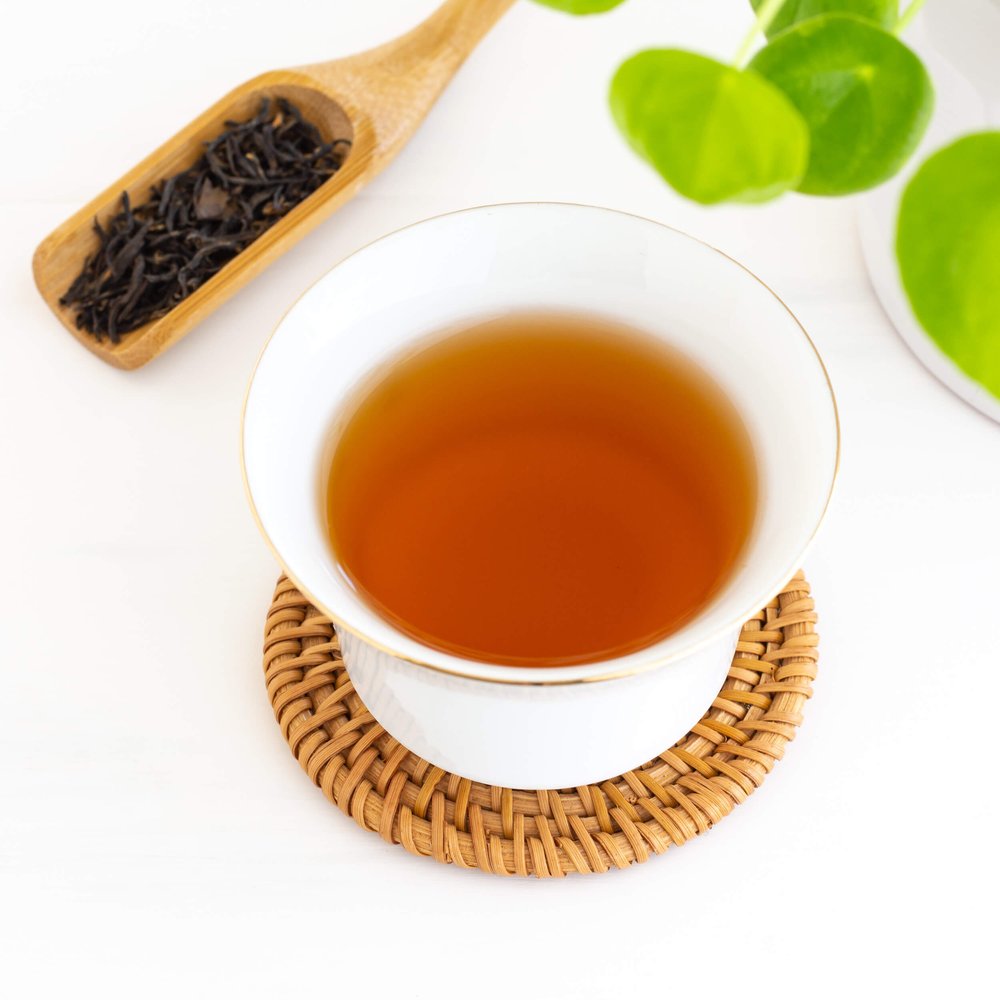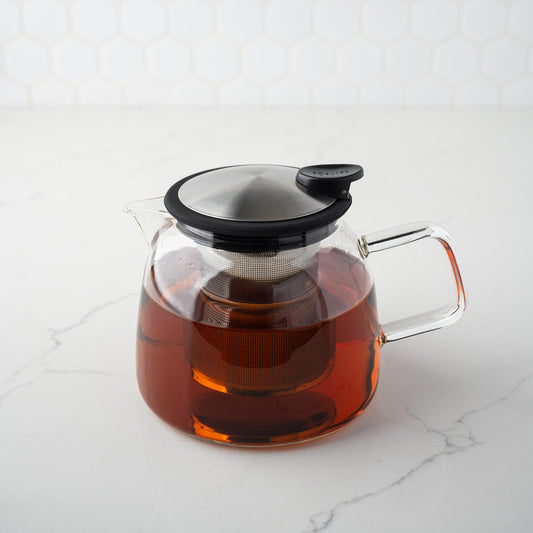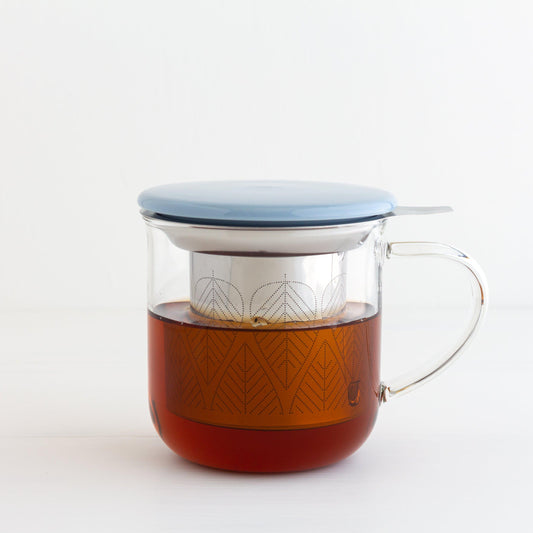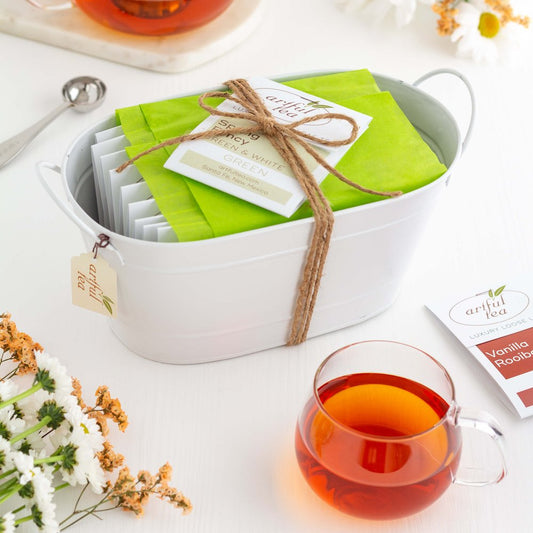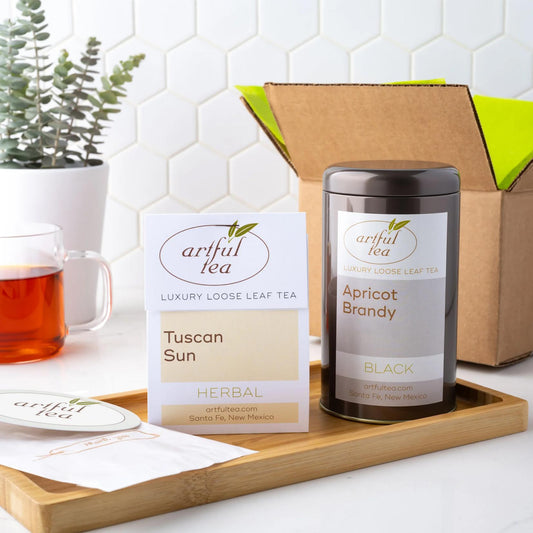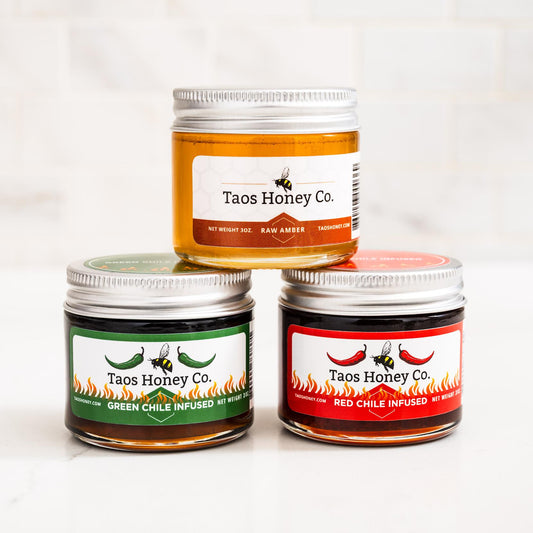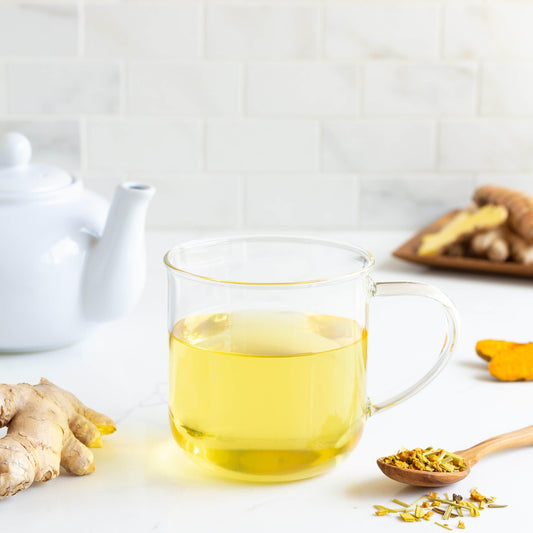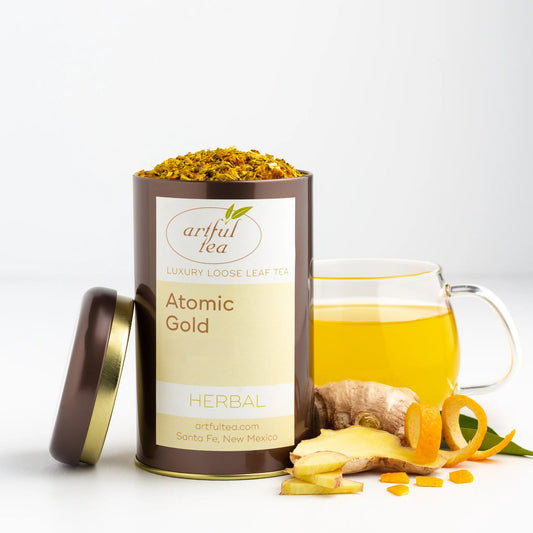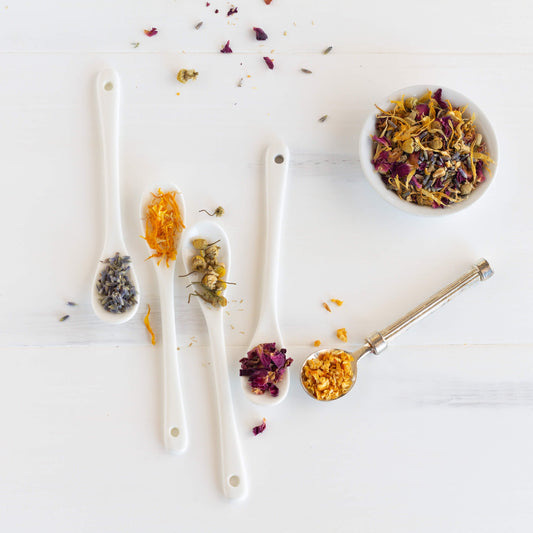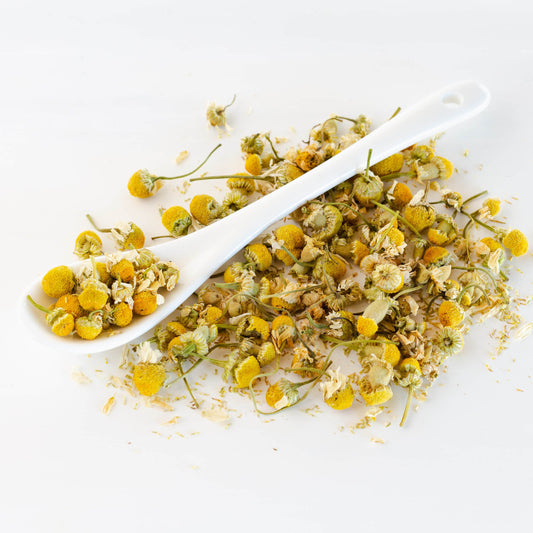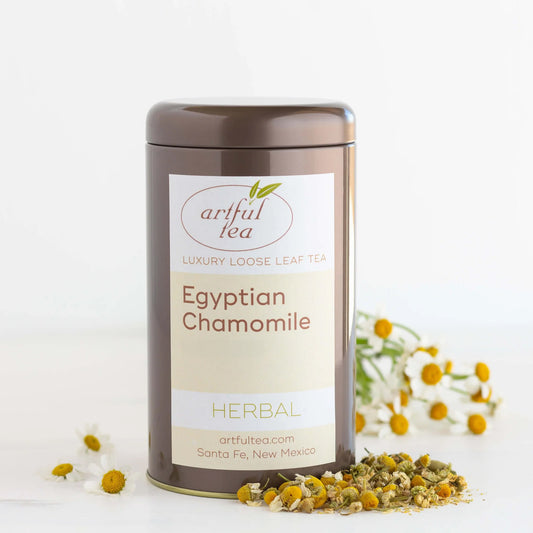Kenyan Purple Leaf Tea
Kenyan Purple Leaf Tea
We're excited to share that our purple tea is back in stock!
Purple tea is produced from the leaves of the camellia sinensis plant, which is the same plant from which black, green, oolong, and other types of tea are made. Unlike other types of tea, however, the leaves of this new varietal are purple instead of green. The tea was first discovered growing wild in the Assam region of India, and is now grown commercially in Kenya, Africa. Purple leaf tea has a similar flavor profile to oolong.
Cups Per Package
This purple leaf tea is carefully blended and packaged by hand in a reusable tin or a resealable kraft bag. Our 2.5 oz. tin or kraft bag makes approximately 30-40 cups of tea. Our 5 oz. kraft bag makes approximately 60-80 cups.
Ingredients
Purple leaf tea (Origin: Kenya)
Tasting Notes
Light and delicate, with floral notes and a clean finish.
How To Brew Kenyan Purple
Use 1 heaping teaspoon per 6 oz. water. Heat water to a full boil (approximately 212 degrees). Steep for 2 to 3 minutes.
We recommend preparing Kenyan Purple using a teapot, tea infuser, or tea filter. These brewing methods give the tea leaves enough room to expand as the tea steeps, resulting in a richer, more flavorful cup.
Kenyan Purple Caffeine Content
Purple tea is low in caffeine.
Kenyan Purple Benefits
Purple tea is high in antioxidants and anthocyanins.
More About Kenyan Purple
While tea has been grown for thousands of years in countries like China and India, purple tea is a relative newcomer to the tea world, having only been discovered a few decades ago. Purple tea has only been available commercially for a few years, and is still a rarity in many tea shops.
Just like other varieties of tea, purple tea is produced from the leaves of the camellia sinensis plant. Most teas are produced from one of two varietals of the camellia sinensis plant, either camellia sinensis sinensis or camellia sinensis assamica. Black, green, white, oolong, pu-erh, and purple teas all come from the same plant, and vary primarily due to their specific varietal, when and where they are harvested, and how they are processed. While most tea plants produce dark green leaves, purple tea is made from a rare, newly discovered purple-leafed varietal of the tea plant. These plants were found growing wild in the Assam region of India, an area where many other types of tea are commercially grown. Assam is also near the purported birthplace of tea, in the Yunnan province of China.
After their initial discovery, these unique tea plants were later taken to Kenya, where the Tea Research Foundation of Kenya worked to create a cultivar of this wild plant which would be ideal for commercial tea production. The third-largest producer of commercial tea after China and India, Kenya now leads as the largest producer of purple tea. This unique tea thrives when grown at high elevations along the equator, where it receives twelve hours of sunlight a day year-round. Kenya continues to produce a growing amount of purple tea each year, as purple tea becomes more well-known and sought-after by tea connoisseurs and curious consumers alike.
Although purple leaf tea has not been on the market long, its popularity is growing as more people find out about the unique history, flavor profile, and health benefits of the tea. While purple tea is on the rise, many people are still unfamiliar with the properties and benefits that are unique to purple tea. Here at ArtfulTea, we’re pleased to be able to introduce our customers to purple tea and to share our knowledge of this exciting new development in the world of tea!




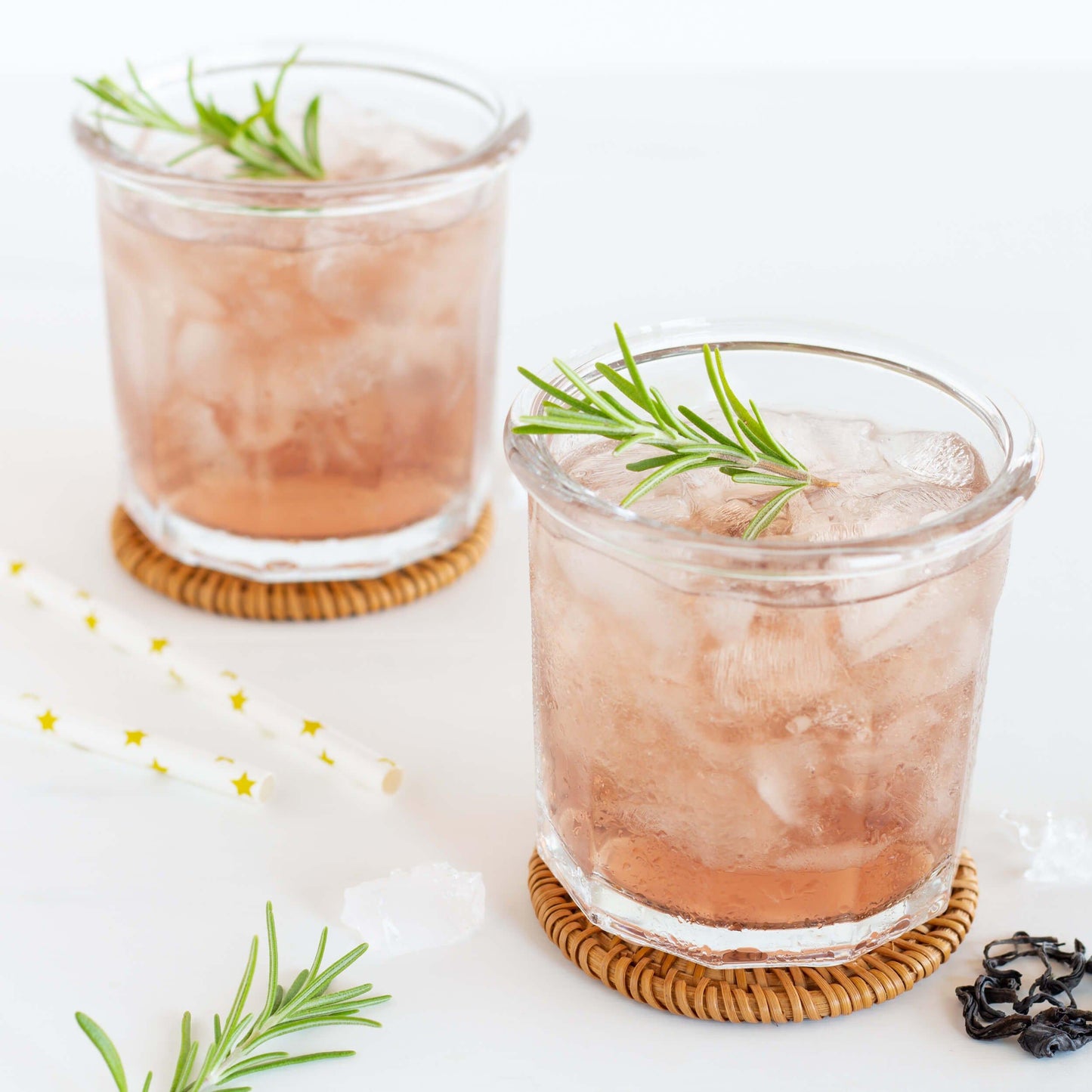
Top tea brewing accessories
-

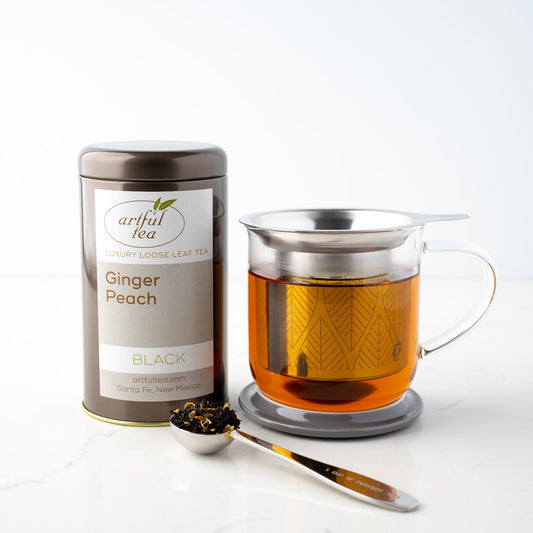 Sold out
Sold outTea Starter Kit
Regular price $48.95Regular price -
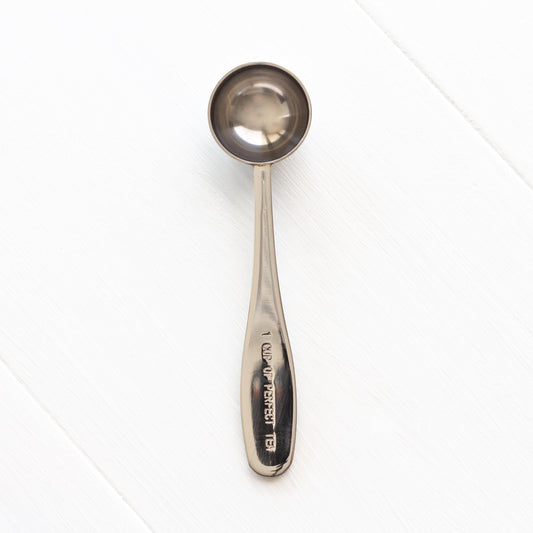
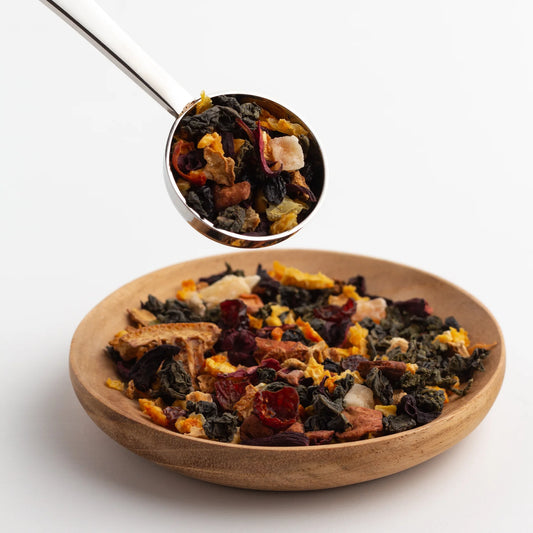 Sold out
Sold outPerfect Cup Tea Measuring Spoon
5.0 / 5.0
(11) 11 total reviews
Regular price $8.95Regular price -
Glass Teapot with Infuser
Regular price $56.95Regular price -
Glass Tea Infuser Mug
5.0 / 5.0
(6) 6 total reviews
Regular price $26.95Regular price
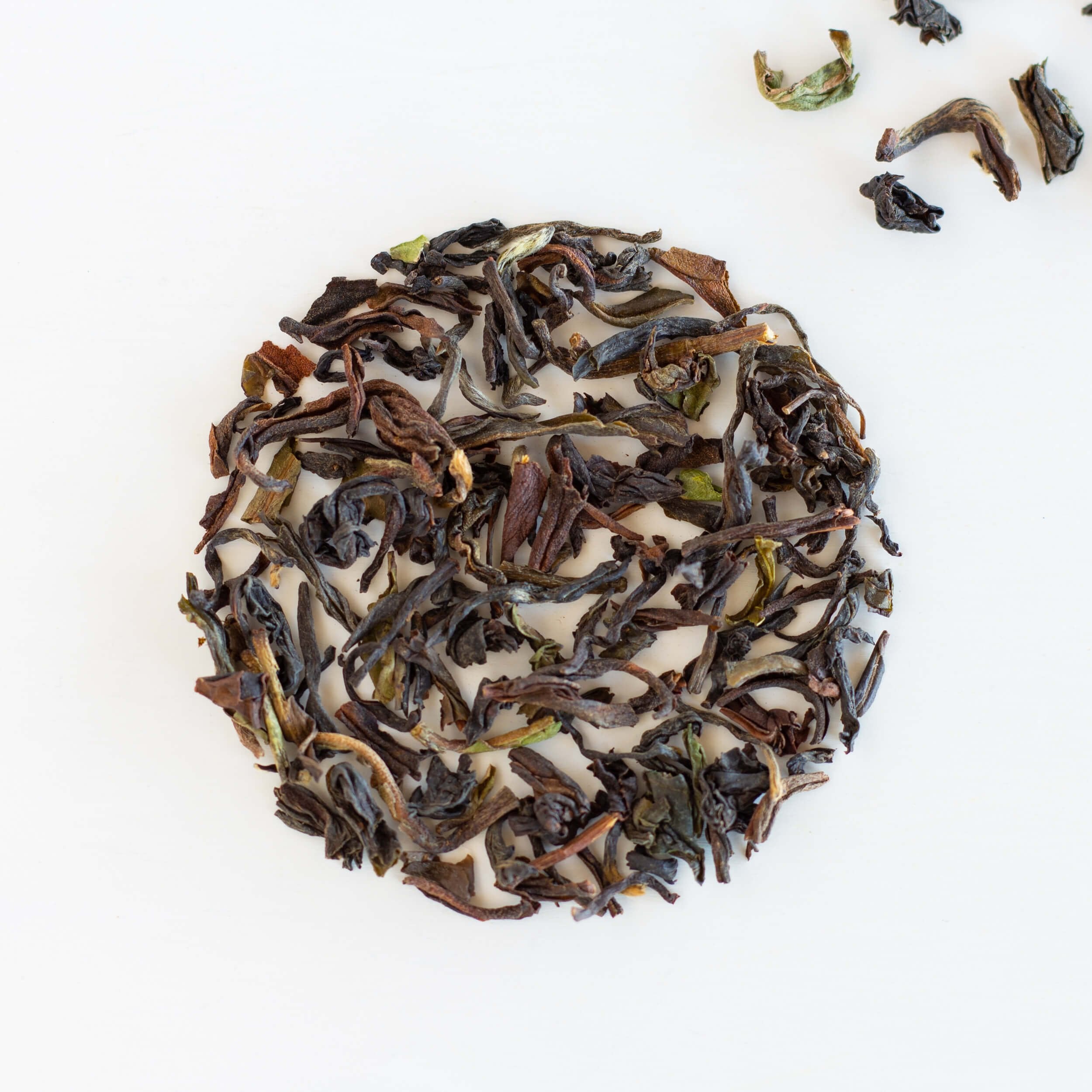
Custom Tea Recommendations
We love providing our customers with personalized tea recommendations! Answer a few short questions and we'll pair you with some teas we think you might enjoy.
I usually drink High mountain oolongs and am so glad I tired this tea! It feels like a cousin to oolongs with its own subtle unique twist. I find myself drinking it every afternoon now as my new fave pick-me-up.
Samplers & kits
-
Tea Sampler Gift Pail
4.83 / 5.0
(6) 6 total reviews
Regular price $45.95Regular price -
Tea Sample Pack • 6 Handmade Tea Bags
4.91 / 5.0
(11) 11 total reviews
Regular price $11.95Regular price -
Tea Subscription Box
Regular price From $19.95Regular price -

 Sold out
Sold outTea Starter Kit
Regular price $48.95Regular price
Pantry
-
Taos Honey
Regular price From $7.95Regular price -
Hollow Tree Honey
Regular price $12.95Regular price -
Hot Cocoa Packets
Regular price $2.95Regular price -
Shortbread Cookies
Regular price $7.49Regular price
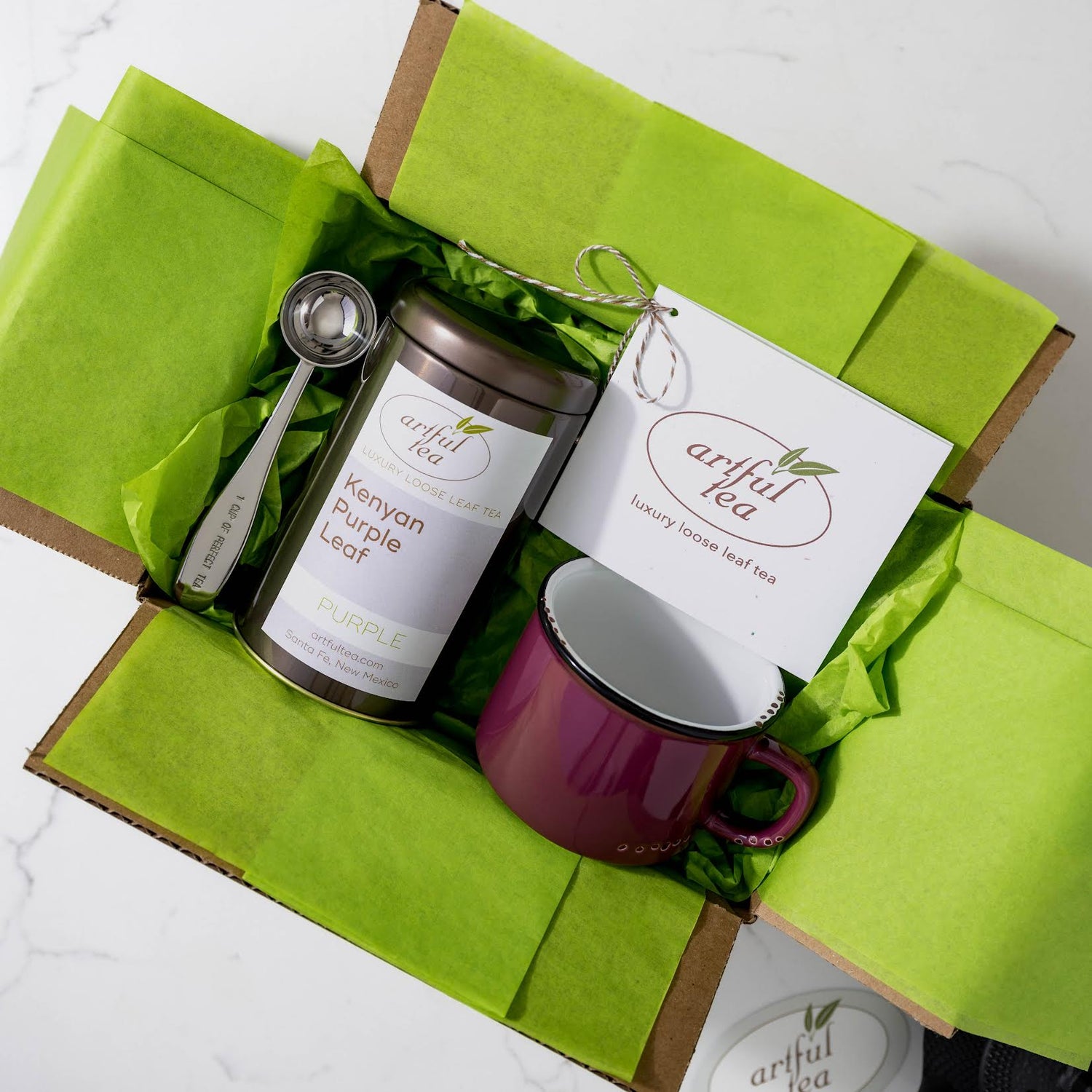
Thoughtful packaging
We put a lot of thought and care into every aspect of ArtfulTea, including our packaging! Each order is gift-wrapped with green tissue paper and includes a hand-written thank you note and a free sample. Whether you're sending a present or treating yourself, we hope it feels like a little gift every time you open a package from ArtfulTea!
Our best sellers
-
Atomic Gold Herbal Tea
4.95 / 5.0
(20) 20 total reviews
Regular price From $16.00Regular priceUnit price $4.00/oz -
Lavender Lullaby Herbal Tea
4.9 / 5.0
(30) 30 total reviews
Regular price From $14.00Regular priceUnit price $7.00/oz$0.00Sale price From $14.00 -
Apricot Brandy Black Tea
4.83 / 5.0
(12) 12 total reviews
Regular price From $16.00Regular priceUnit price $4.57/oz$0.00Sale price From $16.00 -
Egyptian Chamomile Herbal Tea
5.0 / 5.0
(2) 2 total reviews
Regular price From $9.00Regular priceUnit price $6.00/oz$0.00Sale price From $9.00
Join Our Mailing List
Get exclusive access to sales and discounts, new teas, and more!
